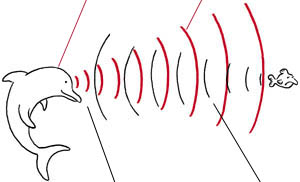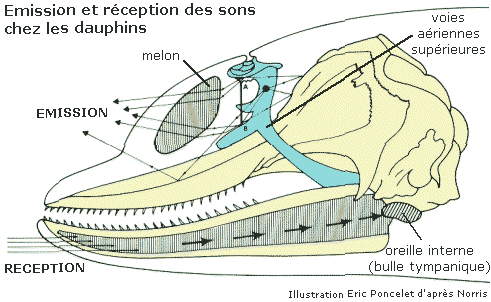|
Dolphins(Dauphins) emit(utter) clicks or whistlings almost permanently. The clicks sound of the brief impulses about 300 sounds per second, emitted(uttered) by a mechanism situated just under the évent. These clicks are of use to the écholocalisation of objects and are passed on by echo by the " oily melon ", which is situated over the forehead(front) and plays the role of acoustic lens. The echos received by the back zone of the lower jaw are passed on towards the average ear by a greasy organ of the lower jaw. This system of écholocalisation, similar to that of a bat, allows dolphin(dauphin) to navigate among his(her) companions and the other elements, and to discover fishes, squids and even shrimps. The whistlings are shouts in a tone resulting from a rather deep zone of the larynx. They serve for communicating the alarm, the sexual excitement and maybe the other emotional states. Because of the capacity of dolphins(dauphins) to learn and to make complex tasks in captivity, their continual communications between them and their capacity, thanks to a training, to approach the sound of some human words, certain researchers suggested that these animals would be capable of learning a true language and of communicating with the Man. However, most of the specialists agree to think that, although the capacity of dolphin(dauphin) to resolve problems places this animal at a level of intelligence close to that of the primates, it is not proved that the communications of dolphins(dauphins) approach the complexity of a true language.
|




